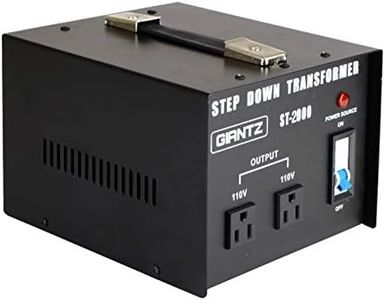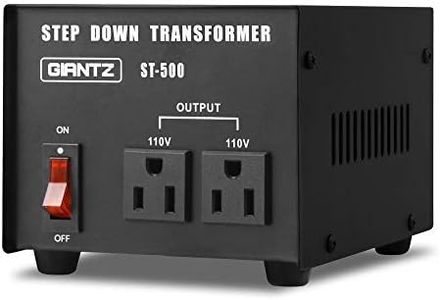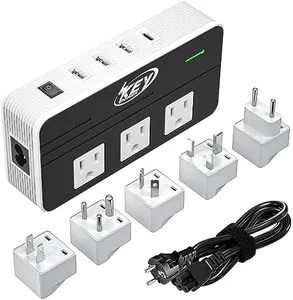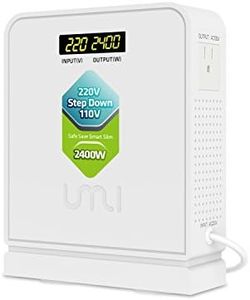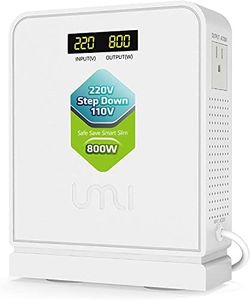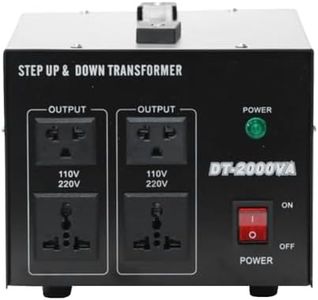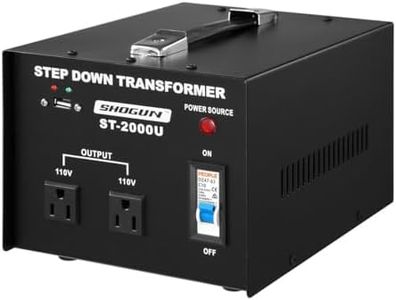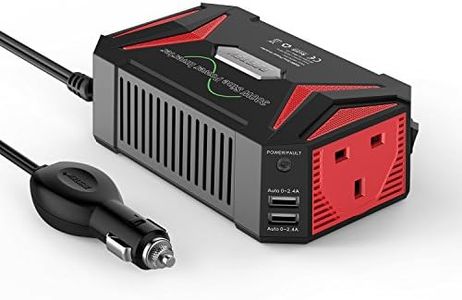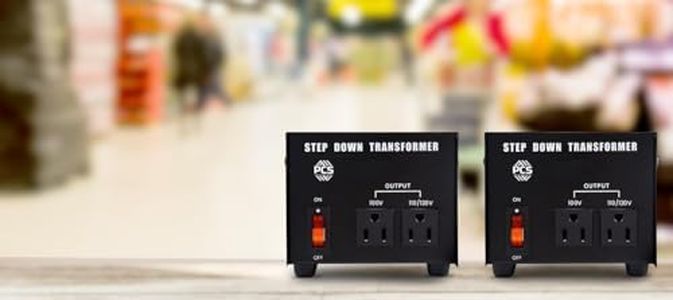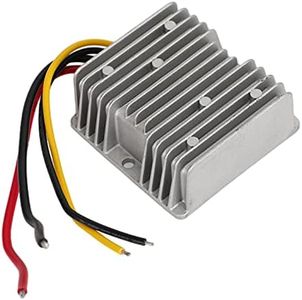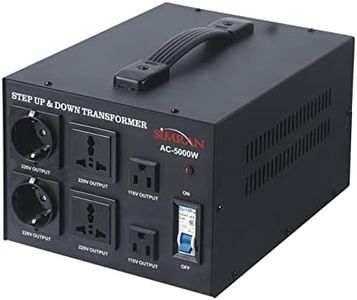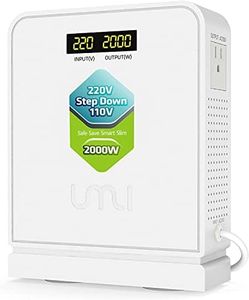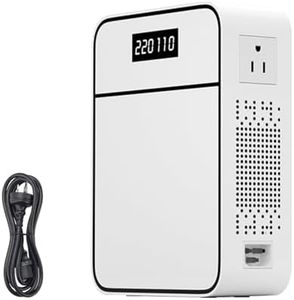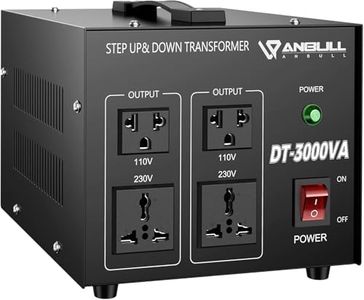We Use CookiesWe use cookies to enhance the security, performance,
functionality and for analytical and promotional activities. By continuing to browse this site you
are agreeing to our privacy policy
10 Best Voltage Converters
From leading brands and best sellers available on the web.Buying Guide for the Best Voltage Converters
When choosing a voltage converter, it's essential to understand your devices' power needs and the electrical environment where you'll use the converter. Voltage converters are commonly used when traveling between regions with different electrical standards, ensuring your devices receive the correct voltage and remain safe. By considering a few key specifications, you can select a voltage converter that reliably powers your equipment without risking damage or inefficiency.Input VoltageInput voltage is the range of voltages that a converter can accept from the wall outlet. This is crucial because the input must match the country or region where you'll be using the converter. Input voltages are typically either 110-120V (as found in North America and some parts of Asia) or 220-240V (common in Europe, Africa, and most of Asia). Some converters are 'dual voltage,' meaning they work with both ranges. When navigating input voltage, always check the specifications of the location—if you only plan to use the converter in one place, matching that region’s voltage is sufficient. For travelers, dual voltage input offers more flexibility and peace of mind.
Output VoltageOutput voltage is what the converter provides to your device. Matching this to your device’s requirements is critical for safety and functionality. Common output voltages are 110-120V or 220-240V, mirroring the typical standards found worldwide. If your device is designed for 110V and you're in a country with 220V power, you need a converter that outputs 110V, and vice versa. When picking, always check the device ratings—choosing the right output voltage protects your equipment from overheating or breaking down.
Power Rating (Wattage)The power rating or wattage tells you how much energy the converter can safely handle. This is important because plugging in a device that requires more power than the converter can deliver may cause the converter to overheat or fail. Wattages can vary from around 50W (good for small electronics like phones) up to 2000W or more (needed for larger appliances like hair dryers). To choose well, add up the wattage of all devices you will use simultaneously and pick a converter that exceeds this total comfortably.
Type (Step-Up, Step-Down, Both)Converters come in step-up, step-down, or combination models. A step-down converter reduces voltage (e.g., from 220V to 110V), while a step-up increases voltage (e.g., from 110V to 220V). Dual models handle both directions. What matters here is the direction of conversion you need based on your device and destination. If you travel both ways or use devices from various regions, a dual (step-up/step-down) model brings flexibility and convenience.
Plug/Socket CompatibilityDifferent countries use different plug shapes and socket types. Many voltage converters include adapters for the physical plug, but not all do. Make sure the converter either matches the plug type of your device or includes the necessary adapter. If you plan to use the converter for multiple devices, look for models with multiple or universal socket designs. Considering the types of devices and places you’ll visit will guide your choice here.
Safety FeaturesSafety features, such as surge protection, overload protection, and thermal cut-off, guard against electrical faults that can damage your converter or your devices. These features are especially important if you'll be using sensitive or expensive electronics. Look out for clear safety certifications or descriptions in the converter’s information. If you're prioritizing long-term safety and reliability, ensure these protections are in place.
PortabilityPortability refers to the size, weight, and ease of transport of the voltage converter. Some converters are small and light, suitable for travel and everyday carry, while others are larger for permanent installation or heavy-duty use. Consider how often you’ll move the converter—if you need it just for trips, a compact, lightweight design will be more convenient. For home or office use where portability is not a concern, larger, more robust options may be better.
